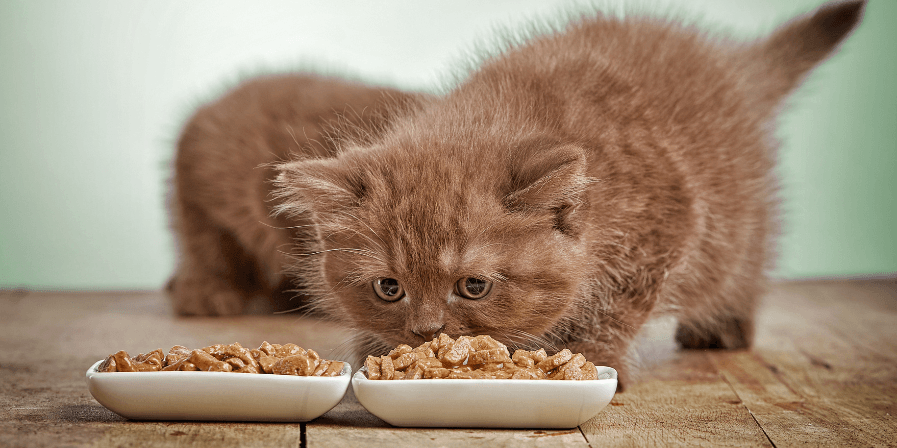Wet Cat Food vs. Dry Cat Food: Which One Should You Choose?

Choosing the right type of food for your cat is an essential part of ensuring their long-term health and well-being. In India, as more people become pet parents, there is growing curiosity about the best dietary options for cats. Many cat owners wonder whether they should feed their feline friends wet food, dry food, or a combination of both.
The good news is that most commercial cat foods available in India are designed to provide balanced nutrition. However, wet and dry foods differ in terms of moisture content, nutritional composition, storage requirements, and overall benefits. Each type has its advantages and drawbacks, and the best choice depends on factors like your cat’s age, health, lifestyle, and even your budget.
In this guide, we will explore the key differences between wet and dry cat food, their respective benefits and drawbacks, and how to determine the best diet for your cat.
Understanding the Key Differences Between Wet and Dry Cat Food
Moisture Content
The most obvious difference between wet and dry cat food is the moisture level. Wet cat food contains about 70-80% water, making it an excellent option for cats that do not drink enough water on their own. Dry cat food has only about 10% moisture, meaning cats that eat only dry food must drink sufficient water daily to stay hydrated. Since cats naturally have a low thirst drive, wet food can help prevent dehydration and reduce the risk of urinary tract infections and kidney disease. This is particularly relevant in India, where the warm climate may increase the likelihood of dehydration.
Manufacturing Process
Wet and dry cat food are made using different processes, affecting their texture, digestibility, and shelf life. Wet food is prepared by mixing fresh or frozen meats with essential nutrients, fats, and vitamins. The mixture is sealed in cans or pouches and cooked at high temperatures to eliminate bacteria. Dry food, on the other hand, is produced by combining proteins, grains, and other nutrients into a dough, which is then cooked, dried, and coated with fats or flavors to make it more palatable. Because of these differences, wet food tends to have a softer, meatier texture, while dry food is crunchy and compact.
Nutritional Composition
Both wet and dry cat food can provide complete and balanced nutrition, but their macronutrient compositions vary. Wet food generally has a higher protein content and fewer carbohydrates, making it a more natural diet for cats, who are obligate carnivores. Dry food tends to contain more carbohydrates and fiber, which may be beneficial for digestion but could contribute to weight gain if not portion-controlled. Cats with specific health concerns, such as diabetes or obesity, may benefit from a diet that is lower in carbohydrates and higher in protein, making wet food the preferable option. However, dry food can be more energy-dense, providing extra calories for active cats or those needing weight gain.
Should You Feed Your Cat Dry or Wet Cat Food? Or Both?
The decision to feed your cat wet food, dry food, or a combination of both depends on various factors, including health conditions, convenience, and personal preferences.
Benefits of Wet Cat Food
One of the biggest advantages of wet food is its high moisture content, which is especially beneficial for cats prone to kidney disease, urinary tract infections, or dehydration. Since many cats do not drink enough water on their own, wet food helps keep them hydrated and supports their overall kidney and bladder health. Wet food is also highly palatable due to its rich aroma and soft texture, making it an excellent choice for picky eaters. Cats recovering from illness or those with reduced appetites may be more willing to eat wet food than dry kibble. Additionally, its soft texture makes it easier to chew and digest, making it ideal for kittens, senior cats, or those with dental issues. Another benefit of wet food is its lower calorie density. Because it contains more water, cats can eat a larger portion without consuming excessive calories, which helps with weight management.
Drawbacks of Wet Cat Food
One of the primary downsides of wet food is its cost. Compared to dry food, wet cat food is usually more expensive, especially when feeding multiple cats. Additionally, wet food has a shorter shelf life once opened and needs to be stored in the refrigerator. If left out for too long, especially in India’s warm climate, it can spoil quickly. Another inconvenience is that wet food requires more effort to serve and clean up. If your cat does not finish their meal in one sitting, the leftovers must be discarded or refrigerated, which can be wasteful and inconvenient for busy pet owners.
Benefits of Dry Cat Food
Dry cat food is a convenient and cost-effective option for pet owners. It has a longer shelf life than wet food and does not require refrigeration, making it easier to store. Many cat owners in India prefer dry food because it is more affordable and can be purchased in bulk without worrying about spoilage. Another advantage of dry food is that it can be left out for cats to eat throughout the day. This is especially useful for pet parents who work long hours or have unpredictable schedules. Dry food can also be used in automatic feeders or puzzle toys, providing mental stimulation for indoor cats. Some veterinarians suggest that the crunchy texture of dry kibble helps maintain dental health by reducing plaque buildup. However, it should not be relied upon as the sole method of dental care, as some cats may still develop dental issues even if they eat dry food.
Drawbacks of Dry Cat Food
The biggest concern with dry cat food is its low moisture content. Since many cats are not naturally inclined to drink water frequently, a diet consisting solely of dry food can increase the risk of dehydration and urinary tract problems. In India’s hot climate, ensuring that cats drinking enough water is crucial, and dry food alone may not provide adequate hydration. Dry food is also higher in carbohydrates, which can contribute to obesity and diabetes if not portioned correctly. Many commercial dry foods contain fillers such as grains or plant-based proteins, which are less biologically appropriate for cats than animal proteins. Additionally, some cats may find dry kibble less palatable compared to wet food, especially if they are used to eating moist meals. Cats with missing teeth, gum disease, or oral pain may struggle to chew dry food, making wet food a better option for them.
Feeding a Combination of Wet and Dry Cat Food
To balance the benefits and drawbacks of both wet and dry food, many pet owners choose to feed a combination of both. This approach allows cats to enjoy the hydration benefits of wet food while also getting the convenience and affordability of dry food. Some cats enjoy having variety in their meals, so offering both textures can make mealtime more enjoyable.
A mixed feeding routine can be structured in several ways:
• Serving wet food in the morning and dry food in the evening.
• Mixing small amounts of dry food into wet food to encourage crunch and variety.
• Using dry food as a treat or reward while primarily feeding wet food.
If you choose to mix both types, it is important to measure portions carefully to avoid overfeeding. Consulting with a veterinarian can help ensure that your cat receives the right balance of nutrients.
Conclusion
Both wet and dry cat foods have their advantages, and the best choice depends on your cat’s individual needs, preferences, and health conditions. Wet food provides hydration and high protein, making it ideal for cats with kidney or urinary issues, while dry food is budget-friendly, easy to store, and convenient for free-feeding. For many Indian cat owners, feeding a combination of both wet and dry food helps maintain a well-balanced diet. If you’re unsure about the best choice for your cat, consulting a veterinarian can help ensure they receive the right nutrition for a long and healthy life.
At DCC Animal Hospital, we prioritize your cat’s well-being and offer expert advice on feline nutrition. If you need guidance on choosing the right diet for your cat, visit us for a consultation today!
FAQs
1. Is it okay to give cats wet food every day?
Yes, it is perfectly fine to feed your cat wet food every day. Wet food provides essential hydration, high-quality protein, and is easier to digest, making it a great option for cats of all ages. However, portion control is important to prevent overfeeding, and it’s best to consult a veterinarian to ensure your cat’s diet meets their specific nutritional needs.
2. Can I feed my cat both wet and dry food?
Yes, feeding a combination of wet and dry food can offer the best of both worlds. Wet food keeps your cat hydrated and provides high protein, while dry food is convenient, cost-effective, and helps maintain dental health. If you choose to mix both, ensure proper portioning to maintain a balanced diet and consult your veterinarian for guidance.


 How can we help?
How can we help?